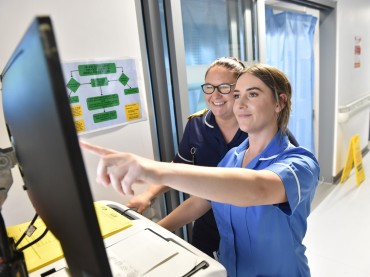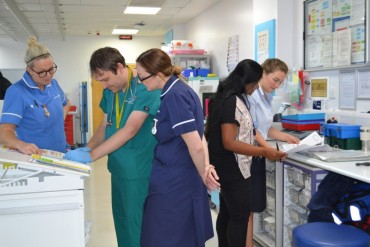X-rays use invisible electromagnetic energy beams to produce images of internal tissues, bones, and organs on film or digital media. Standard X-rays are performed for many reasons, including diagnosing tumours or bone injuries.
X-rays are made by using external radiation to produce images of the body, its organs, and other internal structures for diagnostic purposes. X-rays pass through body structures onto specially-treated plates (similar to camera film) or digital media and a ‘negative’ type picture is made (the more solid a structure is, the whiter it appears on the film).
When the body undergoes X-rays, different parts of the body allow varying amounts of the X-ray beams to pass through. The soft tissues in the body (such as blood, skin, fat, and muscle) allow most of the X-ray to pass through and appear dark gray on the film or digital media. A bone or a tumour, which is more dense than the soft tissues, allows few of the X-rays to pass through and appears white on the X-ray. At a break in a bone, the X-ray beam passes through the broken area and appears as a dark line in the white bone.
The familiar X-ray which most of us will have had at some point in our lives uses a machine that directs a beam of X-rays through the part of your body that is being examined. It is beamed onto a special, digital film. A picture is produced on the film of the structures the X-rays have passed through your body.
Simple radiographs, such as a chest X-ray involve extremely low amounts of radiation. That means that the exposure to radiation is so small that the risk of any damage to cells in your body is very low. However, if you’re pregnant or suspect that you may be pregnant, tell the Radiographer before having the X-ray. The risk of most diagnostic X-rays to an unborn baby is small, your Doctor may consider another imaging test in its place.
- Your X-ray will be performed by a friendly Radiographer
- You may be asked to change into a hospital gown
- There are many different types of X-ray examinations, and depending on your particular examination, you may be asked to remove certain items of clothing and jewellery
- The Radiographer will ask you to confirm some details, including your name, birth date and where you live
- You will be asked to move into different positions in order to take the X-ray
- You won’t feel anything when the picture is being taken.
After the examination, you can dress and leave the department. The results of your examination will not be given to you on the same day. To receive these results you will need an appointment see either the Consultant who referred you, or your own GP. You will be told after the examination which of these Doctors you need to see.



